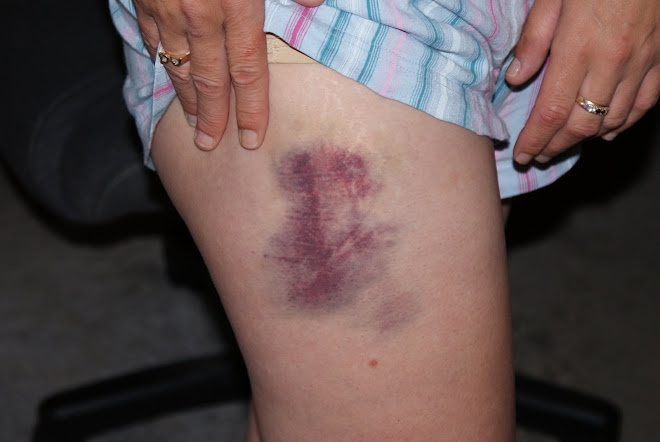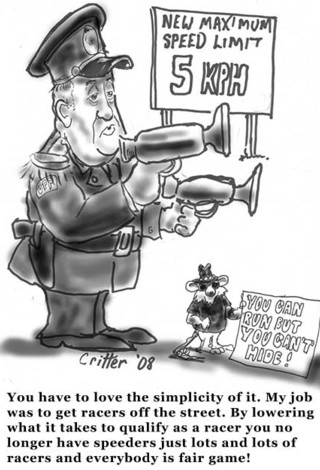Source:TPAC
Two individuals have been killed by Toronto police during the past month. Both deaths have been greeted by the usual police silence about what happened.
Weilaw Duda was killed by police bullets in the port lands on April 19, and the photographs published in the newspapers make it very clear that bullets shattered the windows of the vehicle he was in. Apparently more than a dozen bullets were fired (Duda was unarmed and apparently the incident began because an officer said Duda s car injured him, although the officer was immediately released from the hospital and returned to duty), and there were at least six officers on the scene.
There is a policy in place in the Toronto police service which states: Police officers may not discharge a firearm at a vehicle for the purpose of disabling the vehicle. Police officers may not discharge a firearm at the operator or the occupants of a motor vehicle unless there exists an immediate threat of death or grievous bodily harm to an officer or to a member of the public by means other than the vehicle.
The policy was under consideration at the recent inquest into the death of a youth, Duane Christian, who was shot and killed by police in 2006. In 2006, the policy was worded slightly differently, but in 2008 it was amended to preclude shooting at drivers unless they are threatening death or grievous bodily harm by means other than the vehicle (such as by shooting at people). At the inquest the officer who did the shooting testified that he would act in the same way today in spite of the policy since he disagrees with it. A staff sergeant testified to the same effect.
TPAC has written Toronto Police Service Board members and chief asking for an
an assurance that this policy will be enforced by management. If it had been enforced, Duda would be alive today.
Last week Toronto police officers chased an 18 year old student, Junior Alexander Manon, from a car near York University, caught up to him, and then said he died of a heart attack. Selwyn Pieters, the family s lawyer, saw the body at the morgue and said The issue of a heart attack is a fiction. It seems that he died from physical force.
The Special Investigation Unit has identified the ten police officers to talk to, eight as witnesses.
Junior Manon was a well known and well liked youth in his North York neighbourhood. Hopefully independent witnesses can be tracked down to confirm what really happened. Many in Manon's Jane/Finch neighbourhood will come to the conclusion that this is an example of the ultimate form of racial profiling practiced by police. Events like this, combined with the recent massive raids on racialized and poor neighbourhoods that caught up innocent youth along with a few gang members, will sooner or later lead to social unrest. Will the police force change its ways to diffuse this situation? Will the Police Services Board intervene and show some leadership, by acknowledging these tragedies and vowing to find ways to ensure that police minimize their use of force?
Making sure the evidence fits
When civilians have been seriously injured in incidents involving police officers, the Special Investigations Unit is supposed to be called in as soon as possible in order to separate subject and witness officers and other witnesses for questioning. The SIU and many others have serious concerns that officers talk about events they have seen, agree on what happened, and then write that version of the story up in their notes. There are also concerns about cases where officers do not want to cooperate with the Special Investigations Unit, resulting in interviews that get delayed for a few hours, a few days or even a few weeks.
What has now emerged is that often the officers who think the SIU will want to talk to them, meet and retain a common lawyer. While those lawyers say they play no role in shaping a common story among their clients, legal practice is that a lawyer should share information among those he represents on a case. As the Toronto Star puts it, delicately, in an editorial on May 7, this process opens the door to potential collusion.
Worse, this practise is directly contrary to Regulation 673/98 passed under the Police Services Act. Section 6 of that regulation states The chief of police shall, to the extent that it is practicable, segregate all the police officers involved in the incident from each other until after the SIU has completed its interviews, and A police officer involved in the incident shall not communicate with any other police officer involved in the incident concerning their involvement in the incident until after the SIU has completed its interviews.
Those sections do not provide an exception if the officers happen to share a common lawyer.
The SIU has decided, along with lawyers representing the families of two men who were killed last year by the Ontario Provincial Police, to challenge this practice in a court hearing. Lawyers for the officers apparently will argue that this is not a matter the court needs to decide in this case. The day before the hearing on the motion was to begin, the Attorney General pulled its lawyers who were representing the SIU, from the case, leading to fears that the AG s office had buckled to police pressure. At the time of the publication of this newsletter, the hearing had not been completed and the court had not released a decision.
Wednesday, May 26, 2010
Subscribe to:
Post Comments (Atom)
They had No Choice!

They wore these or I took away thier toys for 7 days!
"Damn Street Racer"pays with Brusies


















No comments:
Post a Comment